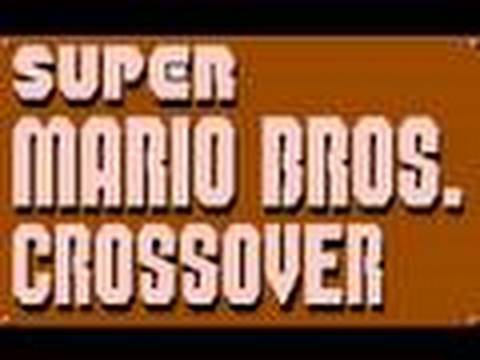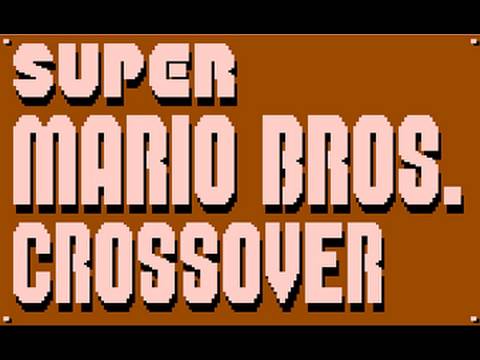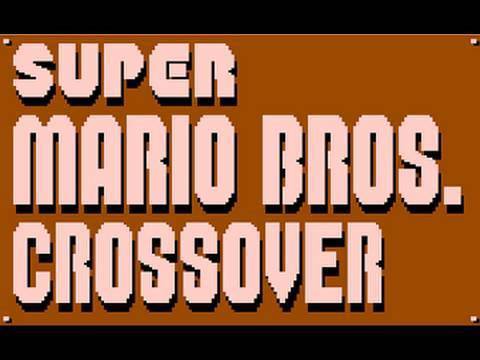The following article explains the process of making a movie, but it can also be applied to a short film. It goes very in depth about each stage of filmmaking; including Development, Pre-production, Production, Post-production, and Distribution/Exhibition.
If you’re making a simple movie, you don’t have to follow all of these steps, but it will give you an overview of what making a real movie is like. When it comes down to it, making a film is a very personal thing, so you can skip steps and rearrange the process to work better for you. This article assumes that you are the writer and director of the movie.
Development
When you’re making a movie, the most important thing is the story. If the story is no good, it will ruin everything about the film even if you have amazing actors and cinematography. The Development stage is about creating a story and deciding how you want to tell it.
The story is usually created in a brain-storming session either with multiple people or just you. It’s best to get some people together that think similarly to you or that understand the project (if you already have an idea). Sit down and think about some possible movie ideas, and make a note of the ideas you like. After you have a few ideas that sound interesting, ask for more ideas similar to those or expand upon the ones you have. It’s your job to focus all of the creativity into an interesting, cohesive story.
Here are a few questions to get you started:
- Why do you want to make a movie?
- Is there a specific theme you’d like to tell a story about?
- What experiences do you want to share with people?
- What unique point of view can you show everyone?
After you form your ideas into a cohesive story, the next step is to write the treatment. The treatment is a summary of the entire story written in the third person without dialogue. It has nothing to do with camera angles or how your movie will be shot; it’s only the action on the screen. It’s almost like you’re writing a short novel. Write the entire story from beginning to end with only the important details. You don’t need to talk about what people are wearing or describe the environment unless it relates to the story. Remember, the treatment is all about the story… so don’t make it about anything else!
Once you have the treatment written, you should think about the purpose, approach, and the target audience.
The purpose of the movie is the reason you are making it. Many people call this the theme, but you may want to make a movie just for fun. To find out the purpose, you could ask:
- Is there a certain message you’re trying to get out?
- Are you just trying to make people laugh?
- Is there a lesson you’re trying to teach?
The approach of the film is how you want to tell the story. You can ask yourself:
- Who’s point of view will the audience see the movie from?
- Is this a realistic film or an exaggerated, ridiculous movie?
- What will the visual style be?
The target audience is the type of person that would enjoy your movie the most. Think about questions like:
- Who can relate to your movie?
- Who would enjoy watching your movie the most?
- Is there a certain age range, sex, or race that your movie speaks to more than the others?
Write down the purpose, approach, and target audience on a single sheet of paper. If you’re interested in technicality, this is called the proposal for your movie. If you were trying to get investors for your film, you’d give them the proposal and the treatment when you meet with them.
Once you have all that figured out, the next step is to write the script. This is a flushed out version of the treatment. The script is separated into different scenes by location. It’s extremely detailed and of course includes dialogue. Basically, if you want something to appear on the screen, write it in the script. The script follows a specific format because it’s supposed to help you figure out the length of the movie. If you follow the format correctly, it’s generally about a page per minute of screen-time, but I haven’t found it to be very accurate. There are a few programs that can help you format your script. Personally, I use Scrivener.
Pre-production
After the entire story is figured out and written as a script, it’s time to move onto Preproduction. This is the planning stage. The goal is to figure out how you will get the script to the screen. Every detail has to be decided, including crew, actors, costumes, props, equipment, locations, food, budget, and whatever else you need.
One of the first things you should do is casting. Are you going to use your friends or professional actors? If you’re going to use real actors, you need to set up auditions. Put a posting on Craigslist or somewhere else to let people know about the audition. Do the auditions however you want. Have people prepare something they already know, have them read some of your own stuff, or do both. I always do both, and then I also direct the actors to see if they can follow direction well. When you find the right person, you’ll know. It’s good to bring another person with you to bounce ideas off of and read lines with the actors. After you’ve decided on all the actors, have a read-through of the script so that everyone can meet each other and get excited about the movie.
After that, you should figure out your crew. If it’s a simple short film, you may be able to get by with a small amount of people. The director, producer, and director of photography are the only essential roles, and you could even do all of them yourself if you want. If it’s a large production, you’ll need tons of people. You’ll need the director, producer, director of photography, sound, production designer, production manager, assistant director, script supervisor, grips, production assistants, and more. If you’re feeling brave, you can have people do more than one job, but it can be pretty stressful if you don’t know what you’re doing. Personally, I like to use as few people as possible to keep things intimate and fun. Some people think I’m crazy though.
Once you get your cast and crew, you need to do a script breakdown. This involves going through the script and making a note of everything you need for the movie divided by scene. This involves props, equipment, stunts, special effects, costumes, actors, and anything else. This will help to keep you organized so that you don’t forget anything.
Go over the script breakdown with your producer and make a budget. This will tell you how much money you need to make the movie. You can compare your budget to how much money you have available to see if you need more money or if you need to change some stuff in the script. In addition to the budget, work with your producer to start making things happen. How will you get the props and costumes? How will you pull off the special effects? Make it happen, or figure out how to make it happen. You should also go location scouting with your producer and DP (director of photography) to determine where you want to film everything.
After you’ve got all that taken care of, go through the script and make a shot list with your DP. This is a list of every shot in the movie. Be detailed and describe every part of the shot. It’s much easier if you already know the locations you’ll be filming at. Divide shots by scene and number them sequentially. Keep in mind that you’ll probably be adding more shots while you’re filming. Make sure the shot list is easy to understand. If you want to plan things out in more detail, make a story board of the shot list. A story board contains a drawing of every shot. This will make things much more clear to your crew and help everyone to get on the same page.
Now that you’ve completed your shot list, make a shooting schedule. You’ll have to work with the times the locations are available. Try to include extra time for problems encountered during filming. Big productions will most likely have more problems than small ones because of all the extra variables. You may want to schedule alternate days in case weather or something else interferes with filming. You may even want to have some backup actors or crew on call in case people don’t show up for small roles or jobs. This has saved my skin many times. Basically, you want to do everything within your power to make sure the shooting goes according to schedule because you’re working with so many people. You may only have one chance to make your movie. Make it count.
Work with your producer to make sure everyone is available for the scheduled dates and times. I repeat, make sure everyone understands the dates and times. Be clear that these dates will not change. Some actors do not understand how much goes into making a movie, so they think you can work with their schedule. Tell them that if they can’t make these dates, they can’t be in the movie. Also reserve all the equipment you need for these dates.
Rehearse with your actors a few weeks before shooting. This will make sure the scenes are fresh in their minds. Work out as many details as possible so that you’re ready to go during production. If the crew has to wait for you, they will be frustrated. It’s your job to have your actors ready whenever they’re needed. You can still leave things open to improvisation, but have a good idea of what will happen.
One more thing to plan is food. This is one of the most important and most overlooked parts of filmmaking. A well-fed cast and crew is a happy cast and crew. You want to do everything within your power to keep everyone happy. You’ll probably run into delays during shooting, and it’s best to keep people comfortable. If they can eat and be relaxed while they’re waiting, it will help a lot. These people will be working hard for you, so treat them well. Have meals that energize and satisfy, and be sure that snacks are always available. Water is your best friend. Have plenty of it. Take care of your cast and crew, and they will take care of you.
Lastly, have a big meeting with everyone on the cast and crew, even the people with small roles/jobs. Make final checks for things you may have forgotten, and more importantly, get everyone excited about the movie. If you’re excited about the movie, everyone will be excited. You are the life of the movie and of the cast/crew. If you get overwhelmed and stressed, everyone will be overwhelmed and stressed. Thank everyone and talk with confidence. Even if the movie fails and you are positive and fun, people will still want to work with you again. Having fun is the most important thing on a film set.
Production
After all of that planning, the day has finally come. It’s time to bring it all together and film the movie. This is the Production stage, where all of the filming takes place. The footage you get here is the only footage you’ll have (unless you reshoot), so do your best. All you have to do in this stage is know what you want and communicate it to everyone else. That’s all a director does.
Make sure you’re one of the first people to arrive on the set. If you don’t show up on time, people will lose their faith in you. Be a general overseer of everything that happens. Go over the shots with the DP (director of photography) and the producer to make sure you all know what’s going on. The DP will work with the crew to set up the first shot. That might take a while. While this is happening, rehearse with your actors to make sure the scene is fresh in their minds. If you want to improvise dialogue, do it now. Have everything figured out by the time the crew is ready for you.
When the DP is ready for the actors, send them into the shot. It’s a good idea to run through the shot with the actors a few times in front of the camera. When you’re ready to film, signal to the AD (Assistant Director) to have the shot called. Here is what the AD will say:
“Quiet on the set! This is a take! Actors ready? Actors say ‘ready’ Sound ready? Sound says ‘ready’ Camera ready? DP says ‘ready’ Roll sound. Sound says ‘rolling’ Roll camera. DP says ‘rolling’” Then one of the grips will hold the slate in front of the camera and read off the shot number. The grip will walk out of frame and say “set” when he’s in place. After that, either you or the AD will call action. I always call action unless I’m in the shot.
Repeat that process whenever you want to film a take. You can also do it for rehearsals if you want to rehearse with everyone. If you’re doing a rehearsal, the AD will say “Quiet on the set! This is a rehearsal” and so on.
During production, you’ll have to think fast and communicate well. People will come to you with problems, and you have to stay cool. Even if you have no idea what to do and you’re really scared, just act like you know everything and be cool. Seriously. One time while I was filming, I was so overwhelmed that I went into the bathroom and cried my eyes out. Then I came back to the set and kept going like everything was cool. Do whatever you have to to make the movie.
Try to think clearly under all circumstances. Don’t overwork the cast and crew. If it’s been a while and people are tense, have everyone take a 10 minute break. Don’t ever yell in front of actors. Keep all problems between the least amount of people possible. No one has to know that the camera is malfunctioning except the DP and whoever is going to get it replaced. Let all problems bounce off of you. If you have to make a decision and you don’t like either choice, then make a choice anyway. The cast and crew will be frustrated by you if you’re indecisive. You don’t have time to dwell on decisions. Just keep moving and deal with things as they come. Remember, you’re the life of the movie, so do your best.
The greatest weapon in a director’s arsenal is humor. No matter what happens, keep everyone laughing. If you’re arguing with the DP, then make a joke to relieve the tension. If it’s 3:00 in the morning, it’s freezing cold, everyone’s tired, the generator breaks down, and half the crew is gone, then make a joke. Everyone is so tense that every joke is a gift. Share laughter like crazy. Making a movie is intense. You will look back on these times as some of the best in your life… especially when everything is going horribly wrong and someone makes a joke. Good times. Do be careful though. If you make a joke at the wrong time, you might make people angry!
All I can tell you is to do your best. And remember, it’s just a movie. If things go wrong, your life isn’t over. You can try again later, you can do a new project, or you can stop making movies altogether. Do what’s best for you and for everyone involved. People will still respect you if you try to make a movie and fail. It’s all about being honest. But still, don’t give up until the very end. When I was making Hero Guy, everything went wrong. I wanted to give up many times, but I didn’t. By the work of some miracle, we finished it. Now I know to never give up no matter what happens.
Post-Production
The Post-production stage is where you edit the film, put in the credits, music, and special effects, and finish the movie. This is indeed a good place to be. If you made it to post-production, have a party. Seriously. Have a party for the cast and crew to thank them for everything. Also, I highly recommend that you rest. It may take a few weeks to recover from production. Also, taking some time off will help you to get an objective view of the film while working with the editor.
If you have a small production, the editor may be the only person involved in post-production, and it may be you. I like to edit my own films. Otherwise, there could be a lot of people involved. They could be working on music, sound, special effects, animation, or whatever you need. It is possible for one person to do it all if you’re ambitious. I knew I’d be making a lot of movies, so I learned all of it.
The first thing to do is to get all of your footage in a form that can be edited. If you shot video, you can just capture it onto a computer. If it’s film, you have to get it digitized. When you capture your footage, be sure to label it according to shot. This will make it way easier to edit, especially if you have a lot of shots.
The first step in the editing process is assembly. Just put all the shots in order and see how they look together. This will probably be much longer than the actual movie. Once you have the assembly finished, you can start trimming shots to make the movie flow better. You might even end up taking out a whole scene or reordering things. When you’re done with that, it’s called a rough cut. Once you fine-tune the rough cut and get all the shots exactly how you want them and put the credits and titles in, that is the final cut. It’s also referred to as picture lock.
When the movie is in picture lock, give it to both the music composer and sound editor. You’ll have to meet with them a bunch of times to see the work they’re doing and make sure it’s what you want. One of my favorite parts of the filmmaking process is to hear the movie with music for the first time. It’s a lot of fun to work with a music composer. The sound editor and music composer will ask you a lot of questions while you’re working with them. You have to know what you want and communicate with them in the best way you can just like you did during production. It’s a fun process because you get to see the movie coming together.
If it was difficult to record sound during the production stage, you may have to do ADR (automated dialogue replacement). ADR involves recording the actors’ voices in sync with the movie. To do this, you’ll have to bring the actors to the sound studio and have them read their lines into a microphone while watching the movie. You have to direct them during this so that they have the same emotions and inflections they did during filming. This can be difficult especially if a lot of time has passed since production, so I recommend you do this ASAP if you need it. Also, if you think you’re going to have to do ADR, tell the actors right after filming so that they don’t think they’re completely off the hook. If actors think they’re done with the movie and you ask them for more help, they might get frustrated.
When the music composer finishes the music, give it to the sound editor. The sound editor will mix it into the rest of the sound. Hand off the finished soundtrack to your editor, or if you’re the editor, put the soundtrack into the movie and it’s done. Rejoice!
Before you do anything else, set up a party and a screening for the cast and crew. These people worked hard for you. Show them how great the finished product is because of their contribution.
Distribution and Exhibition
The Distribution/Exhibition stage is all about getting your movie seen by as many people as possible. Distribution has changed over time. Now that videos are available widely on the Internet, it’s the best way to distribute them. It’s free for you, and anyone can watch your movie with the click of a button. It’s up to you if you want to charge them money or not. There’s nothing wrong with charging money for something you worked hard to create. A great way to distribute your movies to many different websites at once is by using TubeMogul.
Film festivals are a pretty good way to get your movies seen, although they’re quite expensive and competitive. I used to send my films to festivals, but I don’t do it anymore because I just spent a lot of money, a bunch of people watched them, and nothing happened. It’s also costly to travel to festivals that your movie is in. I’d rather just control the whole process myself by putting my movie on the Internet.
You can also put your movie on a DVD (or Blu-ray) if you want. I used to do this all the time, but I stopped because I can just put my films on the Internet now. I would probably burn a DVD if my movies became popular and people wanted to buy them on DVD, but I think it’s much easier though to just offer movies via download. You can still charge money, and you don’t have to deal with a DVD Printing Facility, so it doesn’t cost you anything. Keeping everything digital is cheaper and more convenient for everyone.
Another fun thing you can do is offer special features to people, such as behind-the-scenes of how the movie was made. If you want to do this, you should plan ahead and film it while making the movie. You can put this extra stuff on a DVD or website. Also, it’s a great idea to have a photographer take pictures while you’re filming so you can use the pictures to promote your movie. If you have room in your budget, you can hire an agency to promote your movie for you. I’ve never done this before, but I’m sure it’d help to get the word out.
Conclusion
That’s basically the entire process of making a movie. However, as I stated earlier, filmmaking is a very personal process. This is the conventional way, but you should do it in whatever way works best for you. This article is just a guide. Know that the movie you want to make is within you already, so just bring it out into the world. And remember to have fun. Enjoy every part of the process, don’t get stressed out, experiment, laugh, and learn. Then do it again. If you feel overwhelmed, forget about everything I said and…
Just go make your movie!





